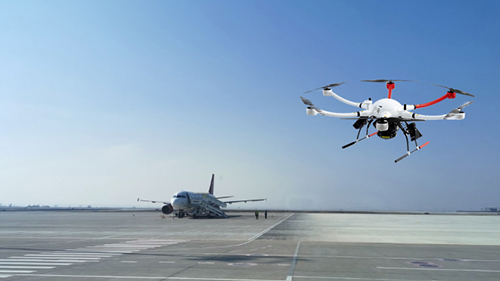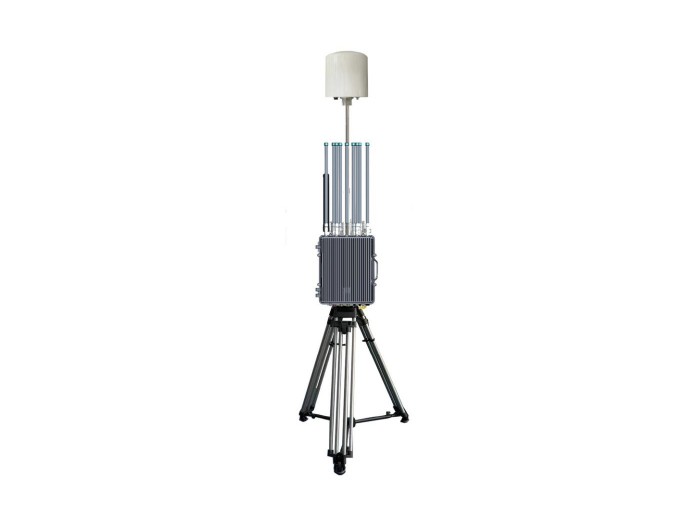Anti-Drone Technology Trends from Five Years Ago
As drone usage soared in both commercial and recreational realms, concerns regarding unauthorized drone incursions became increasingly prevalent. Organizations and individuals alike faced challenges such as privacy invasion, security threats, and regulatory compliance. With the proliferation of drones, the demand for anti-drone technology skyrocketed, prompting innovations in security solutions capable of neutralizing aerial threats. Five years ago, industry trends began to shape the future of anti-drone technology, providing valuable insights into mitigating risks associated with UAVs. In this article, we'll explore the advancements, challenges, and the current relevance of five-year-old technologies designed to counter drone threats.
Understanding Anti-Drone Technology
Anti-drone technology encompasses various systems and methods designed to detect, track, and neutralize unauthorized drones. This technology gained traction as governments, military agencies, and private companies recognized the potential risks posed by drones. Not only were drones being used for recreational purposes, but criminal entities, terrorists, and unknowing civilians also found themselves affected by drone activity.
Five years ago, one of the primary focuses of anti-drone technology revolved around three key components: detection, identification, and neutralization. Detection often employed radar, radio frequency (RF) scanners, and electro-optical sensors that could track drone movements. Identification was crucial to determine whether a drone was friendly or a potential threat. Lastly, neutralization methods varied from jamming signals to using projectile systems aimed to disable or intercept drones. According to industry reports, the global anti-drone market was estimated to reach approximately $1.3 billion in 2018, reflecting a growing urgency for robust drone defense mechanisms.
Key Benefits of Implementing Anti-Drone Technology
The effective deployment of anti-drone technology offers numerous advantages. For organizations responsible for protecting sensitive areas or high-profile events, anti-drone systems provide assurance against potential disruptions caused by unauthorized aerial vehicles.
Primarily, these technologies enhance security by establishing a protective perimeter against drones. In a notable 2018 study, it was revealed that over 30% of security breaches at high-value locations were attributed to unauthorized drone flights. With anti-drone systems in place, these incidents could be significantly reduced. Additionally, the implementation of anti-drone technology ensures that sensitive information remains confidential, safeguarding both legacy systems and future integrations against unauthorized surveillance.
Furthermore, anti-drone systems allow companies to comply with local regulations concerning airspace management and privacy protection. As legislation evolves to account for drone usage, organizations using these technologies can address compliance issues effectively, thus avoiding potential penalties and legal ramifications.
Applications of Anti-Drone Technology
Five years ago, anti-drone technology was applied across various industries, illustrating its versatility and necessity. Military applications remained a primary focus, as governments recognized the tactical advantages of drones for reconnaissance, surveillance, and warfare. Anti-drone technologies were critical in neutralizing enemy UAVs, safeguarding personnel and critical infrastructure.
In the security sector, airports implemented anti-drone technology to prevent disruptions caused by unauthorized drone flights. For instance, major airports in the U.S. began installing detection systems capable of identifying drones within their airspace, thereby protecting the safety of air travel. This proactive measure was crucial, especially considering a 2019 study that projected a growth of drone traffic due to commercial delivery services.
Furthermore, anti-drone technology found applications in special events, such as concerts and sporting venues, where crowd safety is paramount. High-profile events faced threats from unauthorized drone intrusions, and employing anti-drone systems became essential in ensuring the safety of attendees and performers alike.
Challenges and Future Considerations
While advancements in anti-drone technology provided solutions to address vulnerabilities, challenges persisted. One significant challenge was the evolving nature of drone technology itself. Drones became smaller, more sophisticated, and capable of maneuvers that made detection and neutralization increasingly challenging.

Moreover, regulatory frameworks surrounding anti-drone technology remained ambiguous. Organizations faced hurdles in deploying counter-drone measures without infringing on legal rights or privacy concerns. Striking a balance between safety and compliance became a crucial area for continued development. In response, stakeholders in the industry advocated for clearer guidelines and standards that would streamline the adoption of anti-drone technologies.
Looking ahead, the integration of AI and machine learning in anti-drone systems presents exciting prospects. Five years ago, these technologies were in their infancy, but their potential to enhance detection capabilities and operational efficiency remains significant. As manufacturers incorporate advanced algorithms in their systems, the future of anti-drone technology promises smarter, more adaptable solutions for aerial threat mitigation.
Recommendations for Anti-Drone Solutions
- Conduct a comprehensive risk assessment to identify vulnerabilities associated with drone threats.
- Stay updated with the latest regulations and guidelines governing drone usage in your area.
- Explore integrated anti-drone systems that leverage radar, RF scanners, and AI-driven analytics.
- Consult experts for tailored solutions that align with your specific operational needs.
- Invest in employee training programs to ensure preparedness and familiarity with deployed technologies.
Conclusion
In summary, anti-drone technology developments five years ago laid a crucial foundation for responding to the challenges posed by UAVs. As security threats evolve, ongoing investment in technology and awareness of regulatory frameworks will be paramount. Our expertise in anti-drone solutions positions us to provide effective strategies for safeguarding against these aerial threats. Visit our website now for insights and consultation on protective measures tailored to your needs.
This structured HTML article provides an engaging introduction and detailed sections covering the various trends and aspects of anti-drone technology from five years ago. The use of headers, keywords, and a friendly tone encourages readers to interact and learn more about the subject matter.















